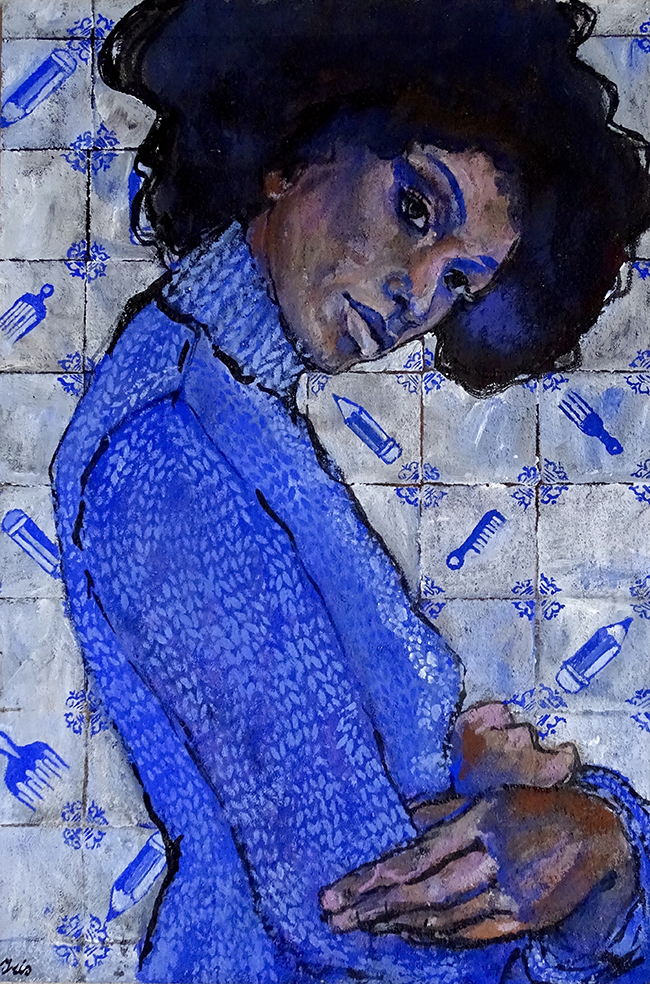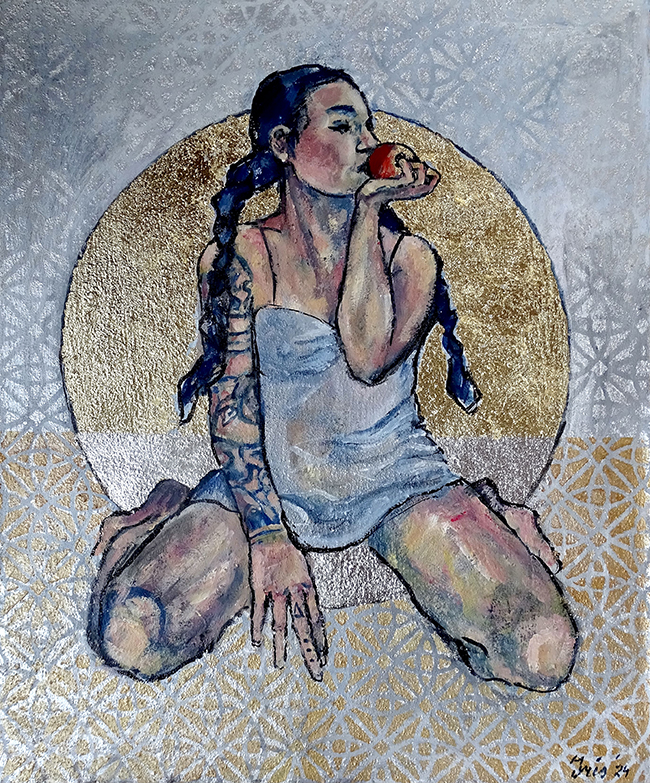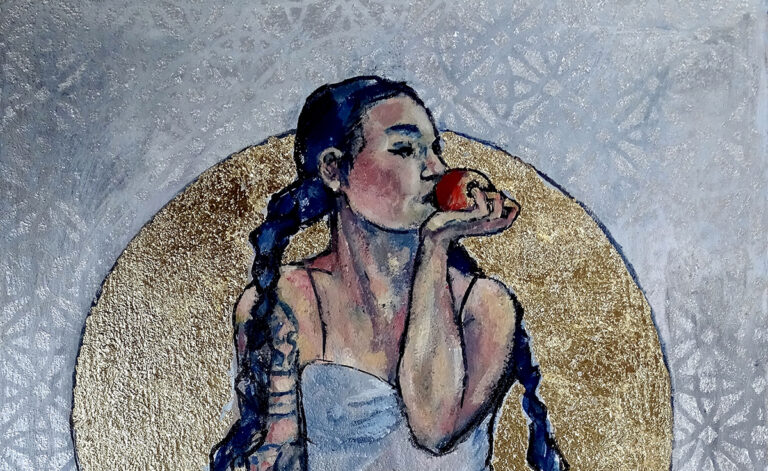Iris van Zanten (1971) has long pursued the core of image-making. After completing her studies at the Academy of Visual Arts in Amsterdam in 1996, she went on to earn a Master’s degree in Art History at the Vrije Universiteit. Her training gave her both practical skill and an acute awareness of the weight of art history. That dual foundation fuels her practice.
Her work is about paring things down—seeking the gesture or texture that makes a story resonate. She often draws from sources that have been painted, carved, and retold for centuries—mythology, Biblical scenes, archetypal stories—and she looks for ways to renew them. To soften her surfaces and achieve a fresco-like presence, she developed a process that combines sand, bone glue, and Van Dyck Brown grounds, over which she layers pigments, ink, and acrylic. The result is a texture that feels rooted in the past yet speaks in a contemporary register.

Combs and Pencils
In Combs and Pencils, Iris van Zanten turns her attention to a practice once used to enforce racial boundaries. During apartheid in South Africa, officials subjected people to the so-called pencil or comb test. A pencil or comb was pulled through a person’s hair. If it slid through easily, the individual might be classified as “white.” If it snagged or stuck, they could be relegated to categories labeled “colored” or “black.”
The arbitrariness of such tests carried devastating weight, deciding who had access to education, mobility, land, and rights. Van Zanten doesn’t reproduce the test literally, but she channels its cruelty into painted form. Pigments, ink, and acrylic on wood give the work a physical density. The medium matters: wood is hard, unforgiving, like the bluntness of the classifications themselves. The surfaces she builds carry roughness, echoing the textures of both hair and history.
What makes the work so charged is that it doesn’t sensationalize. Instead, it underscores how something as intimate and personal as the curl of hair was turned into a bureaucratic instrument of oppression. The act of combing—normally mundane, private, domestic—was twisted into a tool of violence. Van Zanten reframes this act, not as memory alone, but as a reminder of how systems of power can root themselves in daily rituals.
The work insists on looking closely. In the interlacing of lines, in the surface prepared with her custom technique, one feels both the fragility of flesh and the rigidity of imposed labels. By using pigment and ink to layer, she mimics the buildup of history—sedimented, resistant, and not easily erased.

Be Careful What You Wish For
Another work, Be Careful What You Wish For, reaches back into mythology. The story of King Midas is known to many: the ruler who asked for the power to turn everything he touched into gold. His wish was granted, but quickly soured. Food became inedible, loved ones untouchable. What looked like fortune revealed itself as a curse.
Van Zanten paints this scene with pigments, ink, acrylic, and the luminous surfaces of goldleaf and silverleaf. The choice of material echoes the subject: the surface glows, radiant, enticing. Yet within this glow lies unease. In one image, a woman eats an apple—an echo not only of Midas but of other stories of temptation and consequence. The shimmer is seductive, but also hollow.
Her technique heightens the tension. The metallic leaf dazzles at first glance, but when viewed longer, it isolates. The painted apple, the gesture of eating, stands out against the glare, underscoring the theme of desire leading to loss. The story, often retold as a cautionary fable, is given new skin. Here it is not a king’s folly alone, but a reminder of how wealth and consumption can deform even the most ordinary pleasures.
Between History and Myth
These two works show the range of Iris van Zanten’s practice. One looks directly at history, exposing the mechanics of racial classification under apartheid. The other reanimates a myth that has traveled centuries, turning it into a meditation on greed, beauty, and consequence. In both, she relies on surfaces prepared to hold time within them. The sand, glue, and Van Dyck Brown ground give each painting a depth that resonates beyond image.
What ties her works together is not subject matter but a pursuit of essence. Whether confronting political cruelty or ancient stories, she reduces the image to textures and gestures that cut through. There is restraint in her language—an economy of means that yields resonance.
Her paintings hold contradiction: soft yet weighty, luminous yet cautionary, rooted in the past yet speaking to the present. By pushing pigment and surface to carry both memory and story, Iris van Zanten creates art that insists we pause. Her works are not simply objects to view, but spaces in which we measure the costs of desire, the brutality of power, and the endurance of human stories.

